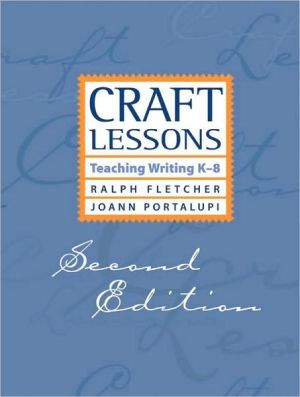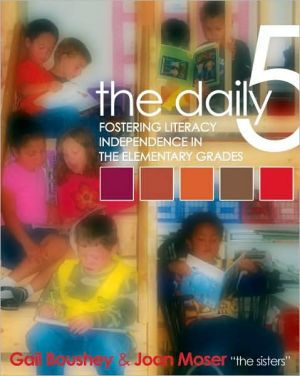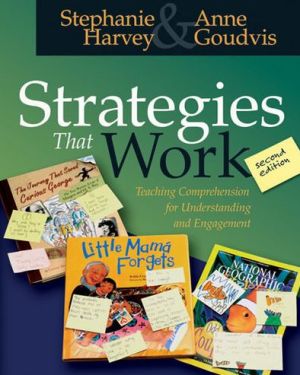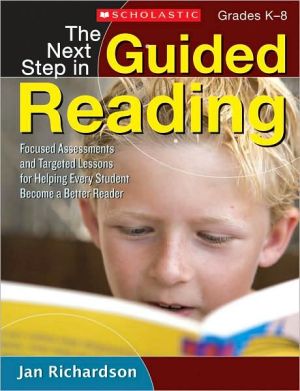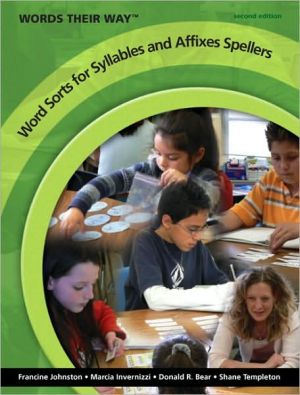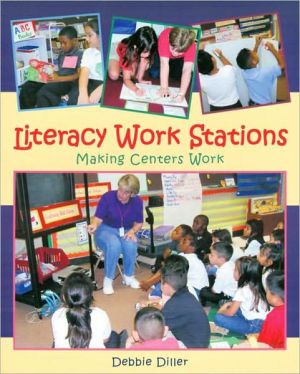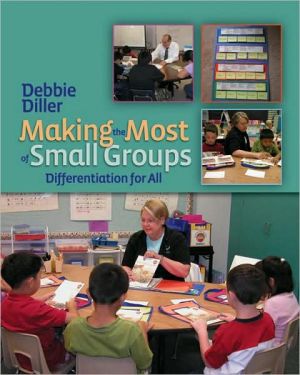Putting Everyday Life on the Page: Inspiring Students to Write, Grades 2-7
Elementary and middle school students often struggle with how to choose and develop topics in their writing. In a conversational and humorous style, Marc Levitt demonstrates how to help students write effectively by drawing from their own diverse and rich experiences.
Search in google:
Show your students how to write and love it! Elementary and middle school students often struggle with how to choose and develop topics in their writing. This engaging, light-hearted book offers a wealth of easily-implemented ideas and activities to encourage a culture of writing and inspire students to draw effectively from their own diverse and rich experiences. The author illustrates how teachers can engage students' observational and sensory intelligence and help them write about what is meaningful to them. Chapter topics include:BeginningsSequential thinking and narrative Observation and description CharactersUse of PlaceEndings
Preface viiAcknowledgments xiAbout the Author xiiiIntroduction 11 Beginnings: Getting the Audience to Pay Attention 7Helping Students Create Compelling Openings 10Understanding the Showing Versus Telling Difference 122 Sequential Thinking: Teaching Students to Think Logically and Make Story Sense 13Talking About Literature 17Helpful Metaphors for Sequential Thinking 18Connecting With the Main Idea 19Using the Arts and Physical Education to Teach Sequence 203 Observation, Description, and Colorful Language: Encouraging Sensitivity to Detail and Observational Intelligence 23Improving Question-Asking Skills 26From Questions to Colorful Language... Then Back to Description 29Helping Students Create Metaphors and Similes 30Keeping It Fun in a Nurturing and Joyful Environment 324 Finding and Using Characters: Using What You Know to Create Memorable Characters 35Focusing on Looks 36Distinguishing Between Shades of Color 37Describing Behavior 38Nailing Down the Details 38Noticing and Describing People's Behavior 39Using Folktales and the Mass Media 40Observing How Bodies Move 41Harnessing the Internal Monologue 42The Role of Characters in Creating Stories 43Dealing With Dialogue 45Using Objects and Dress to Create Characters 46The Role of Inanimate Objects 48Creating Characters as a Collage 49Don't Forget the Surprises 515 Finding and Using Place: Discussing the Role of Place in Writing 53Developing Sensitivity to Place 56Using Place as Story Starters 58Recognizing How Place Affects Behavior 58Creating an Imaginary Landscape 596 Motivating Students: Writing AcrossDisciplines, Genres, Classroom Boundaries, and Into the World! 61Learning How to Learn 62Writing for a Purpose 65Persuasive Writing 69Don't Forget "Site Specific" Forms of Communication 71Getting Back to Persuasion 72Practicing the Craft of Revising and Editing 73Writing Across the Curriculum 75Taking a Detour With a Qucik Story ... 77Using Art as a Springboard to Writing 78Looking at Genre 797 Grammatical Conventions: Teaching the Grammar Basics of Paragraphs, Sentences, Commas, and Periods 83Looking Closer at Paragraphs, Sentences, and Commas 85Using Activities as Story Ideas 86Regarding Run-on Sentences 878 Encouraging a Culture of Writing in Your Classroom: Creating a Writer's Studio and Salon 91Creating a Writer's Studio to Serve Individual Needs 92Creating a Salon to Share Work and Ideas 96A Quick Word on Collective Space... 979 Endings: Putting a Period on a Story Means More Than a Period! 99Sample Dramatic Ending 102Sample Comedic Ending 102Sample Surprise Ending 102Sample Romantic Ending 103Beware of Tragic Endings 103What About Surprise Endings? 104What About Happy or Romantic Endings? 104Serving Students and Their Intent 104Index 107

